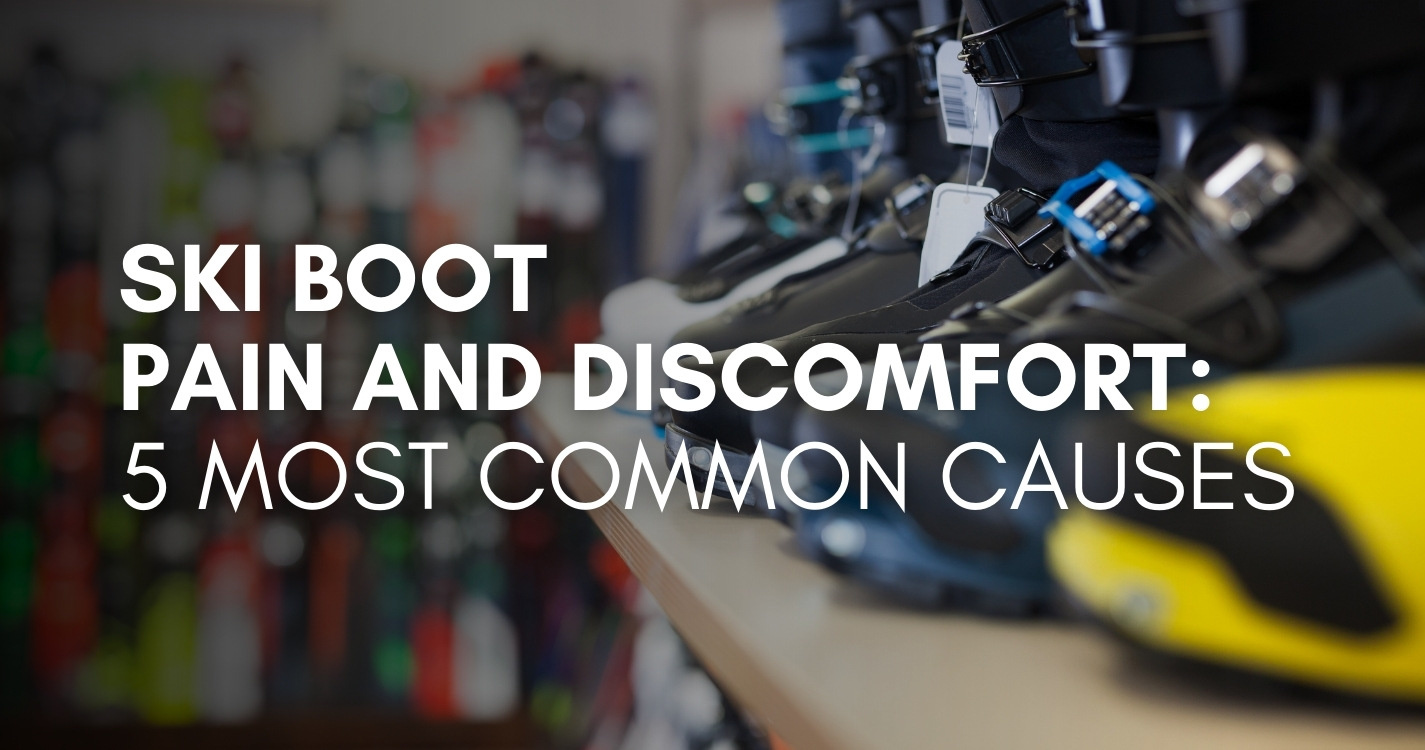Ski Boot Pain and Discomfort: Five Most Common Causes
- Posted on
- By Ski Shack
- Posted in Skiing

Aching shins, ankle pain, and overall foot discomfort are just a few examples of issues skiers may deal with when it comes to their ski boots. If your boots hurt, don’t fret, there are ways to get your feet feeling good again! We’re going to go over the most common causes of ski boot pain and discomfort and how you can correct it.
There are five common causes of ski boot pain and discomfort: wrong size, bad fit, wrong flex, bad buckle habits, and issues with your socks. In this article, we'll address each of these issue and offer tips on how to take care of them.
Wrong Size
One of the most common issues people have is that they buy their ski boots too big. This happens for many reasons, but it often leads to pain, and can cause injuries. The best way to ensure you're getting the right boot for your foot is to go to a ski shop, where a trained boot fitter will use a Brannock Device to measure your foot.
Learn more about boot sizing in our Guide to Ski Boot Size and Flex.
Here in Northeast PA, Ski Shack offers complete boot-fitting and customization services with our in-house Masterfit-certified boot fitter. Boot fitters will expertly guide you to the most comfortable boots for your foot, based on your measurements, skiing ability and style. When in-store, try on at least two models; as with shoes, each brand fits a little bit differently, even when they are the same exact size.
Bad Fit
When trying on new ski boots, they should feel really snug but not so tight that they're uncomfortable. Your toes should touch the front while you are standing straight but pull back slightly when you bend your knees. This simulates how they will feel when you're skiing.
Make sure to look out for the three P's: Pinching, Pain, Pressure. If you experience any of these, tell your boot fitter! They may be able to customize the boot with heating, liners, or shell modifications — or you may need to go with a different boot altogether. Before you hit the slopes in your new boots, wear them around your house to break in the liners — it'll make for a more comfortable first day.

Wrong Flex
A boot's flex rating determines how stiff or relaxed the tongue feels when you lean your shins into them. The higher the flex rating, the more resistance you will feel; lower ratings have more give.
There is no industry standard for flex ratings, and it tends to vary by brand. In general, a flex rating for beginner to intermediate skiers can range from 65-85, intermediate to advanced will be from 90 to 100, and advanced/expert is about 110-130. While it can be tempting to purchase a boot that looks cool to you, it's more important to buy according to your skill level — choosing the wrong flex can lead to discomfort, accidents and injuries.
Buckles
A common issue that skiers run into out on the slopes is poorly buckled boots. When putting your boot on, wait five minutes before buckling them. This gives your boots a chance to warm up, which makes them softer and more malleable, and gives you a chance to move your feet around to their ideal position inside the boot.
Once your boots are soft and warm, buckle from the top down. After you close the top two buckles, lean your shins into the tongues of your boots and slide your feet back. Then put your foot all the way back, finish the rest of the buckles and the power strap. Do one or two warm-up runs and then tighten them one more time. When you're done skiing, store your boots fully buckled so they keep their shape. This will also make it easier to put your boots on and buckle them next time you head to the mountain.
Socks
The final factor that may be causing you pain is your socks. Your feet and your socks should be the only things inside your ski boots. Snow pants, gaiters, even base-layer bottoms, belong outside. Even a thin base layer or long john can bunch up or chafe and cause serious discomfort on your shins or ankles. Many base layer bottoms actually come in a ⅞ length to accommodate this. Pull your socks tight as you slide your foot into your boot so there are no wrinkles. Also, make sure you’re only wearing one pair of socks — multiple pairs can encourage sweating and blisters.

Hopefully, our article gave you some tips on how to stop your ski boots from hurting your feet. But if you’re struggling with pain or discomfort, stop by Ski Shack, and our team will help you get your feet feeling good on the mountain. Because if your feet aren’t happy, then you are not happy!
Read More:
Are My (Old) Skis Safe to Use?
Ski & Snowboard Tune-ups: What, Why, When?
Looking for something else? Based in northeast PA, Ski Shack carries a full line of outdoor gear, clothing and accessories to help everyone in your family stay cozy, dry and safe in the great outdoors this season — no matter your experience or ability level.
